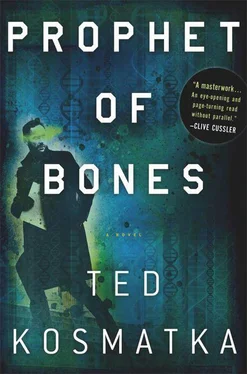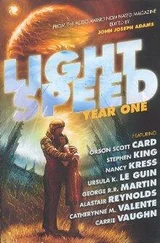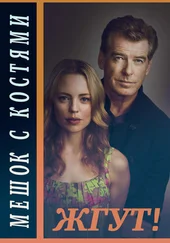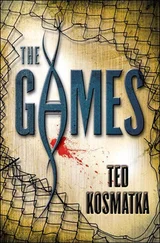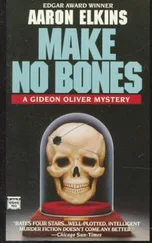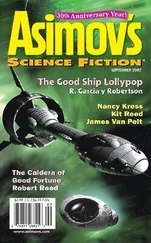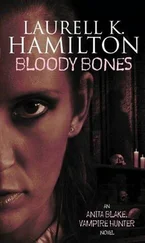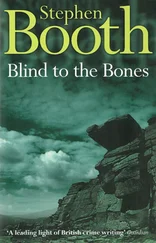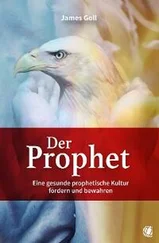“The works.”
Paul made himself useful, helping Hongbin unwrap the padding. In the end, there were two human femurs, a small part of a pelvis, most of the middle and distal phalanges. It felt good to be back in the bone room. The samples could have been from anywhere. Part of a Roman burial, or perhaps an unexpected find during a construction dig somewhere in the United States—with Westing being the next logical destination after a coroner deemed the remains of no evidentiary interest, i.e., likely both Native American and old.
“Female?” Hongbin asked.
“Or a gracile male.” In some populations, it was notoriously hard to tell the difference.
Paul studied the femurs.
Bone does not change to fit your theories. If your theory does not fit the bone record, those bones will continue on, defying your theory forever. Like a thorn in your brain.
DNA is like this, too.
“How many cores do you need?” Paul asked.
“Two should do it. Any guesses on type?”
Paul looked carefully at the bones. “Adult. Other than that, I don’t know.”
“Ethnicity?”
“Not a clue,” Paul said.
Paul touched the bone.
Each population is related to every other population. Science tells us we are all descended from a single people—the root of the tree of human diversity to which all populations must trace back.
Carbon dating established the age of the earth and provides a starting date for when this diversity must have begun. Since the age of the earth is known, and the present genetic diversity can be tested, it is a simple thing to calculate what the mutation rate must have been to yield that diversity. Simple, inescapable math. (Number of years since all human populations were one) x (base-pair substitution rate per million nucleotides) = (existing base-pair diversity per million nucleotides). This formula can be flipped to yield the mutation rate: divide the base-pair diversity per million nucleotides by the number of years, and you arrived at the base-pair substitution rate. Once you have the mutation rate nailed down, you can use the genetic differences between two populations to pin down the number of years for which they’ve been diverging.
The deepest clade division exists between the San Bushmen and the rest of the world. Here, humanity split first. West African Bantus are more closely related to Icelandic fishermen than they are to the San. After the San, the next to split were the central African Pygmies—and then after them, humanity floresced into a dozen families, a hundred peoples. Tribes carrying the mutations for M and N mitochondrial haplotypes left Africa shortly after creation, curling along the arc of the Indian Ocean, passing through India, Thailand, Malaysia, and Australia. Another branch spread north and west, into Europe; another went east, into China and Siberia, eventually crossing the Bering Strait into the New World, where they would one day build great cities, and temples to the sun, and there await their destruction by God-fearing men. (And, in the process, leave their bones to be found by strip-mall construction crews across the continent.)
But all traced back to Africa. All traced back to the original, deep clade division. All had human mitochondria. All were one people, diverging for as long, but no longer, than the world had been in existence.
Paul took a quick core sample from the femur in front of him.
“What do you think would have happened without carbon dating?”
“What do you mean?” Hongbin said.
“I mean, before carbon dating, there were all these different theories.”
“Okay.”
“But now we know.”
Hongbin shrugged.
“What a moment that must have been,” Paul said. “That first objective test of the age of the earth.”
“Has to be a first for everything.”
“It could have gone either way.”
“No, it couldn’t.”
“Well , now we know that. But back then we didn’t.”
“Still.”
“It could have,” Paul said. “Do you think he was nervous?”
“Who?”
“The guy doing the first test.”
“I don’t know. Maybe.”
“I mean, what if dating had shown an ancient age for the earth?”
“Millions of years, you mean?”
“Yeah, like the evolutionists used to say.”
Hongbin considered this carefully. “It would have killed religion.”
“You think?”
“Yeah, killed it dead. It would have put science at cross-purposes with religion.”
“Maybe.”
“So what does that look like, I wonder. A world without religion.”
“Chaos, man,” Hongbin said. “Riots in the streets.”
“Or maybe it would have ended all the religious fighting. Maybe the world would have been a better place.”
“That’s crazy. A world without religions.”
Hongbin took the last of the core samples, and together they wrapped the bones back in their padding.
Finally, Paul asked the thing that had brought him down there: “Do you know what Charles was working on just before he left?”
“Charles? No.”
“Do you know anyone who might know?”
“Why?”
“Because I found something.”
Hongbin gave Paul a sidelong glance as he finished packing the bones. “You gonna keep me in suspense, or what?”
Paul wouldn’t risk telling him about the photographs. “A list of names,” he said instead. “A bunch of different research labs and museums.”
Paul took the folded piece of paper from his pocket and spread it out on the counter. “Do any of these places mean anything to you?”
Hongbin read the list.
“No,” he said. “I can’t say they do. Where’d you get this list?”
“From the garbage can in Charles’s office.”
“So now you’re a cleaning lady?”
“In my spare time,” Paul said.
“Why do you want to know about these names?”
“I’m trying to figure out what Charles was working on.”
After a long time, Hongbin said, “I’ve worked here for six years now.”
Paul watched Hongbin as he put aside the core samples and wrapped the bone back inside its protective plastic covering.
“I have a child and a career,” Hongbin continued. “I have responsibilities. A mortgage. You asked if I knew what Charles was working on before he stopped coming to work. The answer is, I don’t want to know.”
“I hear you,” Paul said. He folded the paper and put it back in his pocket.
“I’m not sure you do. I’m saying, maybe you don’t want to know, either.”
“That’s the thing,” Paul said. “I do.”
“You should leave it alone.”
“What if I can’t?”
“Can’t? There is no can’t.”
“What if I won’t.”
“Then you need to be careful.”
“I will.”
“More careful than this.”
* * *
Back in his office, Paul considered the creased piece of paper. At his desk, he Googled the first few names on the list.
The first name: Grayson Group. A research lab in Germany. Two hundred employees.
The second name: the Smith Museum. Despite its moniker, a private repository for bone remains, closed to the public. The third name: Carner Laboratories, a research lab in Austria. Privately held, sixty employees. Did work on genetic-testing equipment.
After a little deeper Googling, the fourth name came back a pharmaceutical lab. Texas. Just a web address and a post office box, no employees listed. None of the companies seemed connected to each other.
Paul scanned farther down the list. The Field Museum.
The Field Museum.
He’d been there once, a long time ago. Hallowed ground for those interested in strange bones.
It was a small world, archaeology. Everything circling back on itself, the circles getting smaller the higher you went.
Читать дальше
